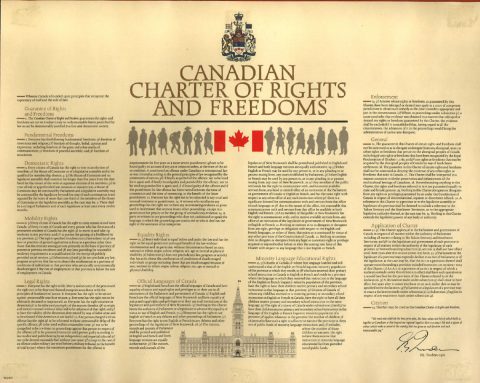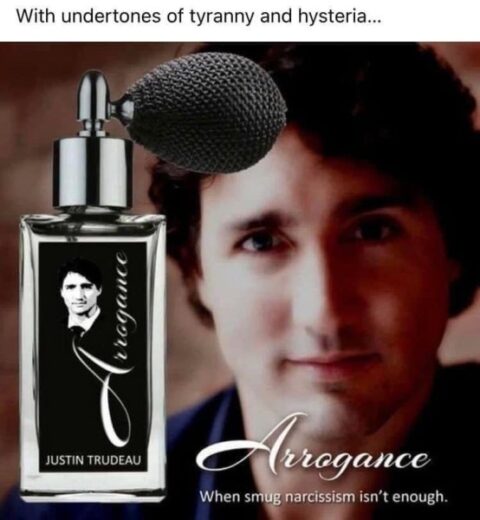A recent Supreme Court of Canada decision to allow the Charter of Rights and Freedoms to be overridden in cases where First Nations’ laws conflict with the rights guaranteed to all Canadians by the Charter:
Governments of the over 600 First Nations bands and self-governing Indigenous communities across Canada have been given the green light by the Supreme Court to, in their laws, legally abrogate and override the civil liberties of their band members and citizens.
In its Dickson v. Vuntut Gwitchin First Nation decision the Court ruled that so long as an Indigenous government law “protects Indigenous difference — understood by the collective as interests connected to Aboriginal cultural difference, Aboriginal prior occupancy, Aboriginal prior sovereignty or Aboriginal participation in the treaty process” — then, despite the fact that the law infringes the Charter rights of its citizens, those Charter rights cannot have any application or be given any effect to.
Four of the seven Judges who ruled on the case ruled that the Canadian Charter of Rights and Freedoms prima facie applies to Indigenous government laws, but notwithstanding that, if the law is to “protect Indigenous difference”, and the exercise of a Charter right would have the effect of diminishing that “Indigenous difference”, then section 25 of the Constitution Act “shields” the law from Charter application.
A fifth Judge ruled that section 25 meant that the Charter didn’t apply at all to Indigenous government laws, not even prima facie.
Two of the seven judges dissented, one of whom very significantly was Madame Justice O’Bonsawin, the Indigenous person appointed to the Supreme Court supposedly to import an “Indigenous perspective” into its judgments. These two dissenting Justices wrote correctly that the majority opinion creates “Charter-free zones” in Canada. They further wrote:
Minorities with Indigenous communities (will) not be protected from the actions of their own governments. All Canadians, including Indigenous people, need constitutional tools to hold their governments accountable for breaches of their entrenched rights and freedoms. It is against the purposes of the Charter and s. 25, as well as being profoundly inequitable, to deny members of self-governing Indigenous nations similar, rights, remedies and recourse.
There are more than 1.8 million Indigenous Canadians, two-thirds of whom live “off-reserve” in Canada’s towns and cities. The Supreme Court of Canada has deprived all these Canadians of the protections afforded by the Charter of Rights and Freedoms on their home reserves and territories.
The Court employed cloud castle reasoning to bring about this illiberal and un-Canadian result, heavy on empty verbal assertions and abstractions with little relation to practical life.
Cloud castles are pleasant and charming to conjure up, even more so because they have no foundations.
The factual foundations of the Court’s decision, such as they, like those of cloud castles, are mainly imaginary. To the extent that may exist in reality, they are wrong.
In an earlier article the writer wrote on this case Cindy Dickson discussed the discriminatory, black sheep treatment she faced when trying to run for office in Vuntut Gwitchin.
The article pointed out other negative, First Nations realities ignored by the majority of the Supreme Court of Canada in its judgement: the “banana republic” nature of small Indigenous governments, and alpha-type band chiefs and councils — “colonizers of their own people” — overseeing a conflicted, family-based system of self-dealing and crony capitalism.
Indigenous Justice O’Bonsawin, as part of her “Indigenous perspective”, expressly acknowledged these entrenched negatives and listed other illiberal aspects of the “Indigenous difference” that the Charter exists to prevent or remedy: the unequal role given men in debating constitutional reforms, band membership rules that excluded some women and their children, election codes that prevent individuals from running for office on the basis of their gender, marital status or sexual orientation, and warrantless searches of homes.






